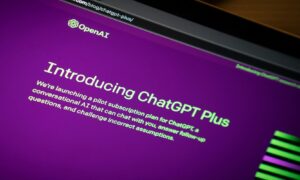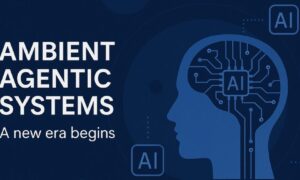The field of natural language processing has been revolutionised by the development of language models like the GPT (Generative Pre-trained Transformer) series. GPT-4, the upcoming version of the series, promises to be a major breakthrough in this field. In this article, we will explore some of the key advantages of GPT-4 and why its release is eagerly awaited.
improved language understanding
Chat gpt 4 Login Gpt 4 sign up
GPT-4 is expected to surpass its predecessor, GPT-3, in terms of language understanding. GPT-3 was able to generate human-like text with remarkable accuracy, but it still struggled with some complex language tasks. GPT-4 is expected to have a greater understanding of syntax and semantics, enabling it to generate more coherent and accurate text.
Enhanced creativity
One of the most exciting aspects of GPT-4 is its potential for creativity. GPT-3 was already capable of generating impressive and creative text, but GPT-4 is expected to take this to the next level. It could be used to generate new ideas, poetry, or even music. This could have significant implications for creative industries, such as advertising, marketing, and media.
The field of natural language processing (NLP) has seen tremendous advancements in recent years, and one of the most significant breakthroughs in this area is the development of large language models such as GPT-4. These models are designed to understand and generate human-like language, and they have already shown remarkable capabilities in tasks such as language translation, text generation, and question answering. In this essay, we will explore the capabilities of GPT-4, its potential impact on the field of NLP, and the challenges that need to be addressed for its successful deployment.
What is GPT-4?
GPT-4 stands for “Generative Pre-trained Transformer 4,” and it is the successor to GPT-3, one of the largest language models currently in existence. Like its predecessor, GPT-4 is based on the transformer architecture, which was introduced by Vaswani et al. in 2017. The transformer is a deep neural network that is designed to process sequences of tokens, such as words or characters, and it has revolutionized the field of NLP by enabling models to learn complex language patterns.
GPT-4 is expected to be even larger and more powerful than GPT-3, which has already shown impressive capabilities in a wide range of language tasks. GPT-3 has 175 billion parameters, making it the largest language model currently available. GPT-4 is expected to have even more parameters, which will enable it to learn from even more data and generate more sophisticated language.
Capabilities of GPT-4
GPT-4 is expected to have a wide range of capabilities, some of which are already evident in GPT-3. Here are some of the tasks that GPT-4 is expected to excel at:
- Language Translation: GPT-4 is expected to be able to translate between languages with high accuracy, even for low-resource languages. This is because the model can learn from large amounts of data and generate translations that are natural and fluent.
- Text Generation: GPT-4 is expected to be able to generate high-quality text that is indistinguishable from text written by humans. This could have a significant impact on content creation, where the model could generate articles, product descriptions, and even entire books.
- Question Answering: GPT-4 is expected to be able to answer complex questions that require reasoning and inference. This is because the model can learn from large amounts of data and understand the relationships between concepts.
- Language Understanding: GPT-4 is expected to have a deep understanding of language, including its syntax, semantics, and pragmatics. This could have a significant impact on chatbots, where the model could provide more natural and human-like responses to user queries.
Impact of GPT-4 on the Field of NLP
The development of GPT-4 could have a significant impact on the field of NLP. Here are some of the ways in which GPT-4 could transform NLP:
- Democratization of NLP: GPT-4 could make it easier for individuals and organizations to develop NLP applications without requiring extensive knowledge of NLP techniques. This is because GPT-4 can be fine-tuned for specific tasks using a small amount of training data, which could lower the entry barrier for NLP development.
- Improved User Experience: GPT-4 could lead to more natural and human-like interactions with NLP applications, which could improve user experience and increase user adoption.
- Increased Efficiency: GPT-4 could automate many tasks that currently require human intervention, such as content creation and customer support. This could increase efficiency and reduce costs for businesses.
- New Applications: GPT could enable the development of new applications that were previously not possible with smaller language models. For example, GPT-4 could be used to generate personalized content for individual users, such as news articles or social media posts.
- Advancements in AI Research: The development of GPT-4 could lead to advancements in AI research, particularly in the areas of language understanding and generation. This could lead to breakthroughs in other fields, such as robotics and autonomous systems.
Challenges for GPT-4 Deployment
While the potential benefits of GPT-4 are significant, there are also several challenges that need to be addressed for its successful deployment. Here are some of the key challenges:
- Computational Resources: GPT-4 is expected to require massive computational resources to train and run, which could limit its accessibility to organizations that do not have access to such resources.
- Data Privacy: GPT-4 will require large amounts of data to train, which raises concerns about data privacy and security. Organizations that use GPT-4 will need to ensure that they are using data ethically and protecting user privacy.
- Bias: Large language models like GPT-4 have been shown to amplify biases that exist in the data they are trained on. Organizations that use GPT-4 will need to be aware of this issue and take steps to mitigate bias.
- Interpretability: GPT-4 is a complex model with millions or billions of parameters, which makes it difficult to understand how it arrives at its outputs. This lack of interpretability could limit its adoption in certain industries, such as healthcare and finance.
Conclusion
In conclusion, GPT-4 represents a significant advancement in the field of NLP, with the potential to transform the way we interact with language. Its capabilities in language translation, text generation, question answering, and language understanding could have far-reaching implications for businesses, individuals, and the field of AI research. However, the deployment of GPT-4 will also present significant challenges, such as the need for massive computational resources, data privacy concerns, bias mitigation, and interpretability issues. As such, it is important for organizations and researchers to approach the development and deployment of GPT-4 with caution and an awareness of these challenges.
Greater efficiency
GPT-4 is expected to be much more efficient than its predecessor. GPT-3 was already able to process large amounts of data quickly, but GPT-4 is expected to be even faster. This means that it could be used to process large amounts of data in a shorter amount of time, making it ideal for applications such as data analysis and machine learning.
Chat gpt 4 Login Gpt 4 sign up
Improved accuracy
One of the biggest challenges in natural language processing is achieving accurate results. GPT-4 is expected to have a much higher level of accuracy than its predecessor, which could have significant implications for a range of industries. For example, it could be used to improve the accuracy of language translation software or to develop more accurate chatbots.
Better understanding of context
Understanding context is essential for generating accurate and coherent text. GPT-4 is expected to have a better understanding of context than its predecessor, which could enable it to generate more sophisticated and nuanced text. This could have significant implications for industries such as journalism, where accuracy and context are essential.\
In conclusion
GPT-4 is set to be a major breakthrough in the field of natural language processing. Its improved language understanding, enhanced creativity, greater efficiency, improved accuracy, and better understanding of context make it a highly anticipated release. As the potential applications of GPT-4 become clear, it is likely to transform a range of industries and change the way we interact with language.



































